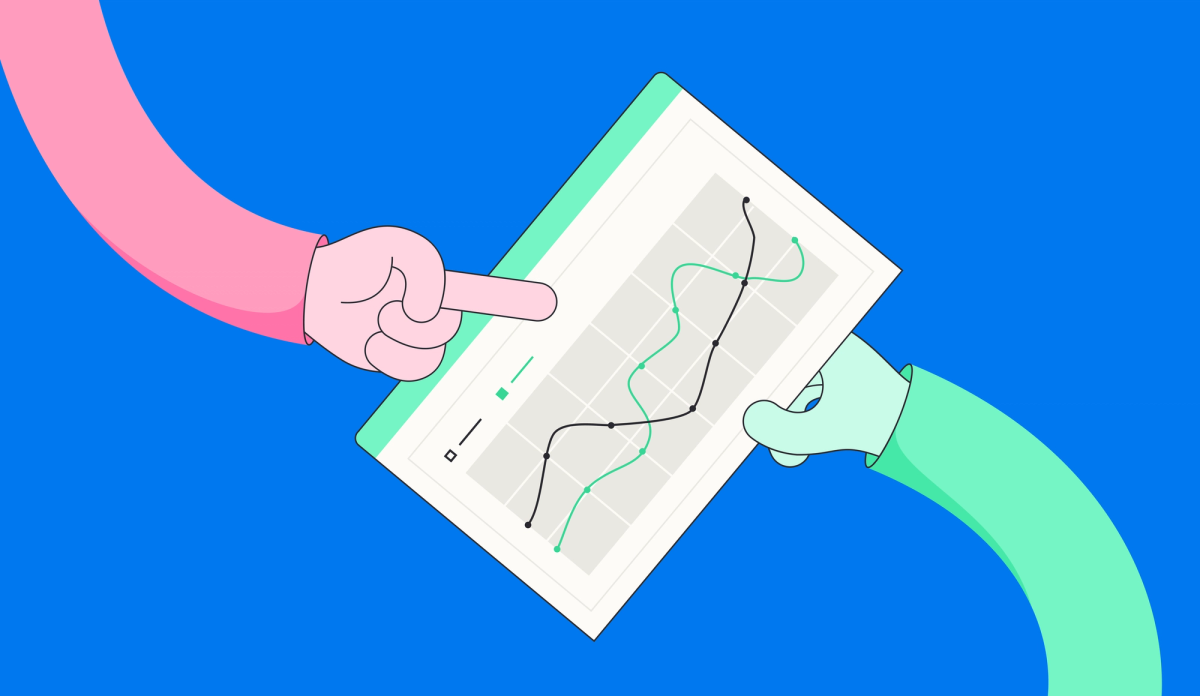B2B software purchasing decisions often hinge on value and impact, and sales demos play a pivotal role in the process. Sales demos are a critical opportunity to showcase your product's unique capabilities, address pain points, and forge a connection with potential buyers. Mastering the art of the sales demo can significantly impact your bottom line.
Research from Gartner shows that 35% of B2B buyers engage with a seller's interactive demo during the purchasing process. This statistic underscores the immense potential of optimizing demos to boost conversion rates. But how can you ensure that your sales demos consistently deliver results?
The answer is to transform your product demonstrations into powerful conversion engines with proven strategies, tactics, and the right sales demo tool. Let's take a closer look at sales demo conversion rates and eight actionable tips to increase your demos' efficacy.
Understanding Sales Demo Conversion Rates
Your sales demo conversion rate represents the percentage of prospects who, after experiencing your demo, take the desired action—such as signing up for a free trial, requesting a quote, or buying your product.
This metric is critical because it directly reflects the effectiveness of your demos in influencing buying decisions. High conversion rates indicate that your demonstrations resonate with your target audience, effectively showcase your product's value, and compel prospects to move forward in the sales process.
Ultimately, a high demo conversion rate translates to more closed deals, increased revenue, and accelerated business growth. A good benchmark for B2B SaaS companies is around 10-20%.
Other indicators of successful demo conversions include:
- Engagement During the Demo - Active participation from prospects, questions asked, and overall attentiveness.
- Positive Feedback - Comments or inquiries after the demo indicating interest or a desire for further information.
- Follow-up Actions - Requests for additional demos, pricing information, or trial signups.
These signals suggest that your demo has piqued interest and created a deeper connection that may turn your prospects into customers.

Common Challenges Affecting Sales Demo Conversion Rates
However, it's not always smooth sailing with sales demos. Several challenges can hinder your impact your ability to turn prospects into paying customers, including:
- Capturing and Maintaining Prospect Attention - A dull or generic presentation can easily lead to disinterest and missed opportunities. Grabbing and holding your prospect's attention throughout the demo, especially in a virtual setting, requires a captivating and engaging approach.
- Addressing Specific Needs and Concerns - A one-size-fits-all approach rarely yields optimal results because each prospect has unique pain points and requirements. Failing to tailor the demo to their specific needs can leave them feeling unheard and unconvinced about your product's value proposition.
- Overcoming Objections and Hesitations - Prospects often have reservations or concerns that need to be addressed before they commit to a purchase. Anticipating and proactively addressing these objections during the demo is essential to building trust and moving the deal forward.
- Technical Glitches and Demo Hiccups - Nothing derails a demo faster than technical difficulties or unexpected hiccups. Whether it's a slow internet connection, a software malfunction, or a presenter stumbling over their words, these issues can disrupt a demo's flow and leave a negative impression on prospects.
- Lack of Clear Call to Action (CTA) - Once the demo is complete, failing to provide prospects with a specific next step can lead to confusion and inaction. A winning sales demo should always culminate with a clear and concise CTA that guides them toward a purchase.

8 Tips to Improve Your Demo Conversion Rates
Here are eight actionable tips to create more effective sales demos and boost conversions:
1. Know Your Audience
The foundation of a successful sales demo lies in a deep understanding of your audience. Use discovery calls to gather information about your prospects’ business needs. Invest time in researching their industry, pain points, and goals, such as:
- What challenges do they face?
- What are their priorities?
- What metrics matter most to them?
Enter the data into a CRM integrated with your demo platform. Segment your audience based on this information and tailor your demos accordingly. Speaking directly to your prospects' unique needs and challenges establishes a stronger connection and increases the likelihood of conversion.
Demostack's customization features enable you to create personalized demo experiences for different audience segments, making your presentations more relevant and engaging. You can leverage prospect data to dynamically adjust the content, focus, and messaging of your demos.
2. Create a Compelling Story
Features alone rarely win deals. What truly captivates prospects is the story behind those features—the problems they solve and the transformations they enable.
Craft a narrative that highlights your product's value proposition and resonates with your audience's pain points and aspirations. Instead of just listing functionalities, paint a vivid picture of how your product streamlines workflows, boosts productivity or drives revenue growth.
Weave this narrative seamlessly into your demos. Use overlays to spotlight key features in context or build custom clones to show personalized customer journeys. Add rich visuals, testimonials, and data visualizations to create an immersive experience.

3. Focus on Value, Not Features
While it's still necessary to showcase your product's features, demonstrating their value is even more crucial. Avoid overwhelming your audience with technical jargon and instead highlight the benefits and ROI they can expect. Focus on how your product solves their problems, improves their efficiency, or boosts their bottom line.
Interactive, customized sales demos are key to effectively showcasing your product's unique value proposition. Create demos that focus on outcomes, not just functionalities, so your prospects clearly see the tangible benefits your product offers and become more inclined to convert.
4. Leverage Interactive Elements
Static presentations can be dull and forgettable. Consider incorporating interactive content elements like polls, quizzes, or live Q&A sessions to keep your audience engaged and encourage active participation.
Interactive demo features like clickable product tours and simulated scenarios enhance audience engagement and facilitate a deeper understanding of your product. Allowing prospects to interact with your product hands-on makes the sales demo more memorable and increases your chances of conversion.
5. Personalize the Sales Demo Experience
A generic demo rarely resonates with prospects. Research indicates that faster-growing companies drive 40% more of their revenue from personalization.
Instead, personalize each demo to the specific pain points and needs of the individual or company you're presenting to. Research their industry, challenges, and goals beforehand, and customize your demo to address their unique situation. This demonstrates that you've taken the time to understand their needs and reinforces the value your product can bring.

Demostack's powerful personalization tools enable you to quickly and easily tailor demos to meet the specific needs of each prospect in minutes.
The editor allows you to quickly customize everything on-screen—including text, data, and charts—to create dynamic, customized demos that address your prospect's pain points and showcase how your product can solve their specific challenges. You can even create templates to be used or modified for other prospects or stakeholders.
5. Ensure a Seamless Technical Experience
Unfortunately, technical glitches can derail even the most well-prepared sales demo. Thoroughly test your demo environment, internet connection, and any software or tools you'll be using to ensure a seamless technical experience. Have a backup plan in case of unexpected issues, and be prepared to troubleshoot on the fly.
A smooth, professional demo experience reinforces your credibility and instills confidence in your product. Ideally, you should use a demo platform that prioritizes stability and reliability to minimize the risk of technical disruptions while prospects are experiencing self-guided demos. Features like automated environment setup and real-time monitoring let you focus on delivering a flawless demo without worries.
7. Gather and Act on Feedback
After each demo, solicit feedback from participants to gain valuable insights into its effectiveness. Use surveys, follow-up emails, or direct conversations to gauge their level of interest, understanding, and any remaining concerns.
Most importantly, carefully review your demo platform's analytics to get actionable data on engagement. This data allows you to identify areas for improvement and continuously refine your approach. Pay close attention to metrics like drop-off rates, feature interactions, and overall sentiment to understand what resonates with prospects and what needs refinement.

8. Follow Up Effectively
The demo doesn't end when the presentation concludes. Follow up promptly with personalized emails or calls to recap key points, address any outstanding questions, and provide additional resources. Maintain consistent communication to nurture the relationship and guide prospects toward a purchase decision.
Use Demostack's CRM integrations to track demo engagement, review key sales and marketing analytics, and automate follow up communications. A well-timed and personalized follow up can reinforce the value of your product and keep the conversation moving forward to a sale.
Transform Your Demos, Improve Your Conversion Rates
Compelling sales demos are a critical factor for success in B2B software sales, so keeping the process optimized for conversions is imperative. Using these eight tips will significantly enhance your demo's impact and drive higher conversion rates. But to do it right, you need a sales enablement and demo automation platform like Demostack.
Demostack's robust and versatile platform provides the tools and insights to create impactful, personalized demos that resonate with your prospects. With Demostack, you can streamline sales demo creation, automate personalization, gather valuable analytics, and scale your demos effortlessly—transforming your demos into powerful sales engines.
Try Demostack today to unleash the full potential of your product sales demos.



